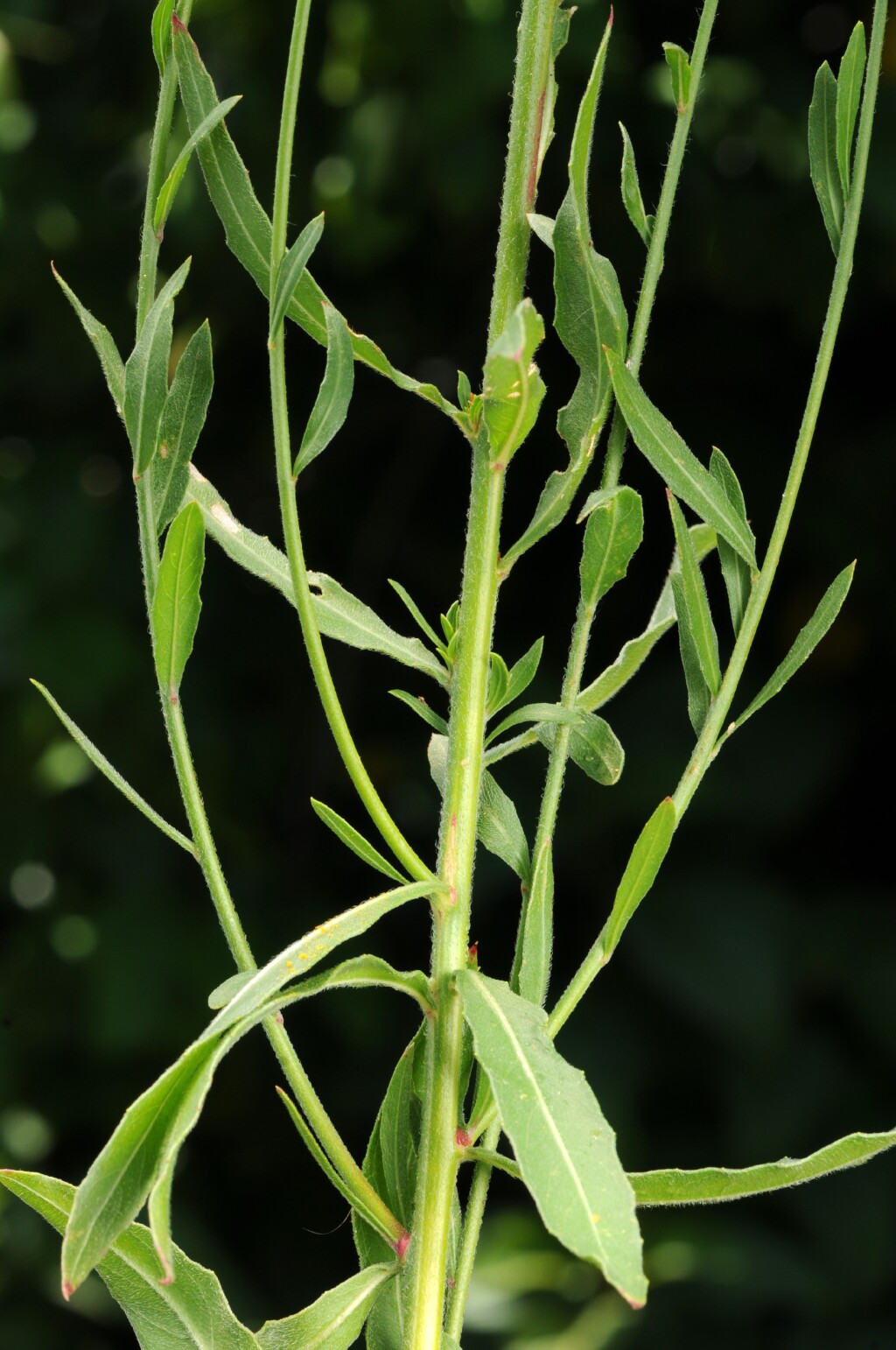Oenothera
Annual, biennial or perennial herbs, usually erect, sometimes with a reduced stem. Leaves basal or alternate, nearly entire or undulate to pinnatifid, petiolate or sessile. Inflorescence spicate or racemose or flowers solitary in upper leaf axils. Flowers actinomorphic or zygomorphic, usually opening in the evening and fading the following morning or opening at sunrise and fading within the day; hypanthium usually much prolonged beyond ovary, slender, deciduous after anthesis; sepals 4 (rarely 3), often failing to separate completely, non-persistent; petals 4 (rarely 3), white, yellow, pink or purplish, often darkening with age, broadly obovate, truncate; stamens usually 8, sometimes as few as 4 (not in Victoria); ovary 3- or 4-celled. Fruit a many-seeded loculicidal capsule or a few-seeded, indehiscent, woody and nut-like capsule, sessile or basal part sterile and stipe-like; seeds obovoid or angular, smooth.
About 145 species, native to North and South America but a number have become cosmopolitan weeds; 17 species naturalised in Australia.
Recently expanded to include Calylophus Spach, Gaura L., and Stenosiphon Spach (see Wagner et al. 2007).
Jeanes, J.A. (1996). Onagraceae. In: Walsh, N.G.; Entwisle, T.J., Flora of Victoria Vol. 3, Dicotyledons Winteraceae to Myrtaceae, pp. 930–942. Inkata Press, Melbourne.
 Spinning
SpinningWagner, W.L.; Hoch, P.H.; Raven, P.H. (2007). Revised classification of the Onagraceae.




